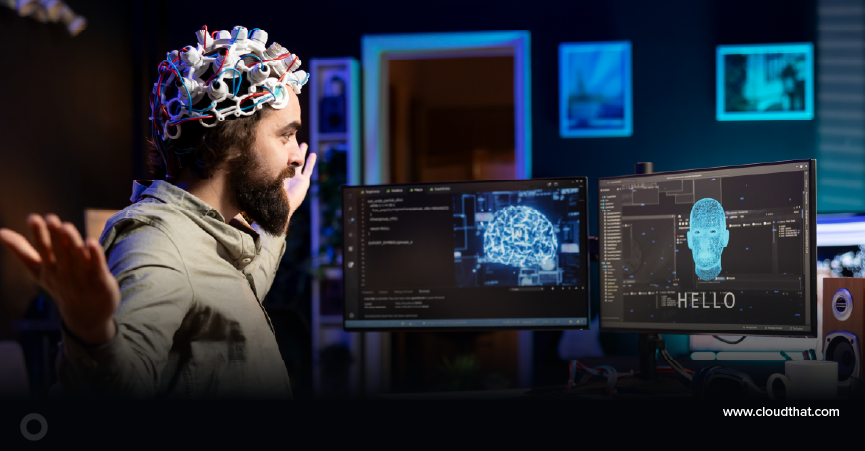|
Voiced by Amazon Polly |
Overview
OpenAI, renowned for its groundbreaking contributions to artificial intelligence, has once again pushed the boundaries of innovation by introducing Sora, its latest video generation model. Sora represents a significant leap forward in AI-driven video creation, leveraging state-of-the-art techniques to produce high-quality, realistic videos from textual prompts. In this blog, we’ll delve into the intricacies of Sora, exploring its architecture, capabilities, applications, and the underlying technology that powers this advanced video generator.
Pioneers in Cloud Consulting & Migration Services
- Reduced infrastructural costs
- Accelerated application deployment
Introduction
Sora stands as OpenAI’s text-to-video generative AI model, capable of creating videos based on textual prompts. Users describe text form, and Sora generates a corresponding video matching the prompt. This opens new possibilities for content creation, storytelling, and visual communication.
PROMPT: A stylish woman walks down Tokyo Street, filled with warm glowing neon and animated city signage. She wears a black leather jacket, a long red dress, and black boots and carries a black purse. She wears sunglasses and red lipstick. She walks confidently and casually. The street is damp and reflective, creating a mirror effect of the colorful lights. Many pedestrians walk about.

Like DALL·E 3 and other text-to-image generative AI models, Sora functions as a diffusion model. It starts with static noise frames and gradually transforms them into images that match the provided textual prompt, with videos extending up to 60 seconds. Notably, Sora addresses object consistency by considering multiple video frames simultaneously.
Moreover, Sora combines diffusion model principles with transformer architecture, like GPT models. This blend optimally balances the strengths of both models: diffusion for low-level texture and transformers for high-level layout and composition of video frames.
In practice, Sora breaks down images into smaller three-dimensional “patches” that persist over time, akin to tokens in language models. The transformer organizes these patches, while the diffusion component generates content for each patch.
To enhance computational feasibility, Sora includes a dimensionality reduction step during patch creation, streamlining the process by reducing computation for every pixel in every frame. Additionally, Sora employs recaptioning using GPT to enhance video fidelity, rewriting user prompts to capture their essence more accurately.
What are the Limitations of Sora?
Despite its remarkable capabilities, Sora has certain limitations. It lacks an implicit understanding of physics, leading to instances where real-world rules are not accurately represented. Additionally, the model may exhibit spatial inconsistencies and unnatural shifts in object positions, highlighting areas for improvement in future iterations.
What are the Use Cases of Sora?
Sora offers various applications across various industries, leveraging its text-to-video generative AI capabilities. Here are some key use cases where Sora can be effectively utilized:
- Creating Videos from Scratch: Sora enables the effortless creation of videos from scratch, providing a streamlined process for generating visual content based on textual prompts. This functionality empowers users to bring their ideas to life without the need for extensive image editing expertise.
- Extending Existing Videos: Sora can extend the length of existing videos by seamlessly filling in missing frames enhancing and elongating the original content.
- Social Media Content Creation: Sora caters to the growing demand for engaging short-form videos on social media platforms such as TikTok, Instagram Reels, and YouTube Shorts. It simplifies the creation of visually captivating content, particularly for scenes that are challenging or impossible to film conventionally. For instance, depicting futuristic scenarios like Lagos in 2056 becomes feasible with Sora’s capabilities.
- Advertising and Marketing: Traditional methods of creating adverts, promotional videos, and product demos often incur substantial costs. Sora revolutionizes this process by offering a cost-effective alternative through text-to-video AI tools. For instance, a tourist board seeking to showcase the scenic beauty of the Big Sur region in California could opt for Sora to generate compelling aerial footage, saving time and resources.
- Prototyping and Concept Visualization: Sora facilitates rapid prototyping and concept visualization across various industries. Filmmakers can utilize AI-generated mockups to preview scenes before actual filming, while designers can create videos showcasing product concepts before initiating full-scale production. For example, a toy company can leverage Sora to generate AI mockups of new products, such as a pirate ship toy, to assess their visual appeal and feasibility.
- Synthetic Data Generation: In scenarios where privacy concerns or feasibility constraints limit real data use, synthetic data is a valuable alternative. Sora enables the generation of synthetic data with similar properties to real datasets, catering to diverse use cases such as financial data analysis and personally identifiable information processing. Organizations can mitigate privacy risks by tightly controlling access to synthetic data while leveraging data for various applications.
What are the Risks of Sora?
The emergence of Sora poses potential risks similar to those associated with text-to-image models. These include:
- Generation of Harmful Content: Sora may generate inappropriate content such as violence, gore, sexually explicit material, derogatory depictions, hate imagery, and promotion of illegal activities. The definition of inappropriate content varies based on user demographics and context, potentially leading to unintended graphic material, especially for younger audiences.
- Misinformation and Disinformation: Sora’s ability to create realistic yet false scenes can lead to the creation of “deepfake” videos, disseminating misinformation or disinformation. This can disrupt electoral integrity, manipulate public opinion, and undermine trust in legitimate information sources, particularly during significant global events like elections.
- Biases and Stereotypes: Their training data influences Generative AI models like Sora, potentially perpetuating cultural biases and stereotypes in generated content. Addressing and mitigating biases in training data is crucial to minimize their impact on the generated videos, especially in sensitive areas like hiring practices and law enforcement.
Conclusion
Whether you’re an AI enthusiast, content creator, or industry professional, Sora’s impact on the future of AI and creative expression is undeniable.
Drop a query if you have any questions regarding Sora and we will get back to you quickly.
Making IT Networks Enterprise-ready – Cloud Management Services
- Accelerated cloud migration
- End-to-end view of the cloud environment
About CloudThat
CloudThat is an award-winning company and the first in India to offer cloud training and consulting services worldwide. As a Microsoft Solutions Partner, AWS Advanced Tier Training Partner, and Google Cloud Platform Partner, CloudThat has empowered over 850,000 professionals through 600+ cloud certifications winning global recognition for its training excellence including 20 MCT Trainers in Microsoft’s Global Top 100 and an impressive 12 awards in the last 8 years. CloudThat specializes in Cloud Migration, Data Platforms, DevOps, IoT, and cutting-edge technologies like Gen AI & AI/ML. It has delivered over 500 consulting projects for 250+ organizations in 30+ countries as it continues to empower professionals and enterprises to thrive in the digital-first world.
FAQs
1. How does Sora AI work?
ANS: – Sora operates as a diffusion model, initializing each video frame with static noise and employing machine learning techniques to progressively transform the images into a form resembling the provided description.
2. Can Sora Gen AI Tool integrate with other marketing platforms and tools?
ANS: – Yes, the Sora Gen AI Tool can be integrated seamlessly with various marketing platforms and tools, allowing users to leverage data from multiple sources for comprehensive analysis and optimization.
3. How long can Sora videos be?
ANS: – Sora videos can be up to 60 seconds long.

WRITTEN BY Niti Aggarwal


 Login
Login


 March 5, 2024
March 5, 2024 PREV
PREV










Comments